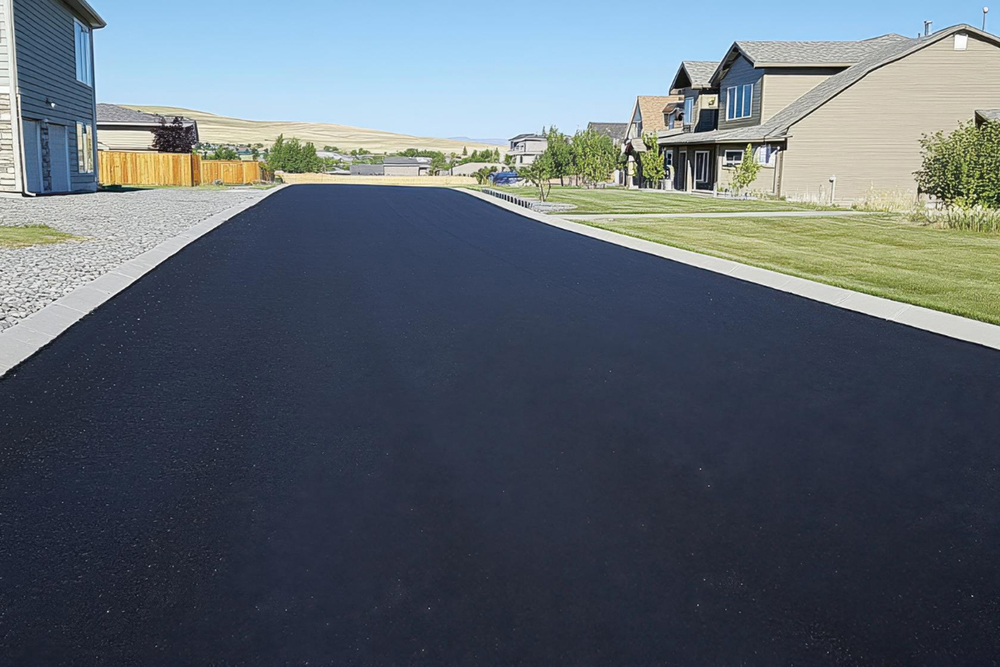
Sealcoating is one of the best ways to protect your asphalt surfaces and keep them looking their best. A properly executed sealcoat adds a protective layer to your asphalt, preventing damage caused by UV rays, water, and regular wear and tear. If you're planning to schedule a sealcoating service for your driveway, parking lot, or any asphalt surface in Sanford, FL, preparation is key to achieving the best results.
This guide will walk you through the complete process of preparing for a sealcoating project, so you can ensure a smooth application and long-lasting results.
Sealcoating is the process of applying a protective sealant layer over an asphalt surface. The sealant acts as a barrier against harsh weather conditions, oxidation, oil spills, and traffic damage. Not only does sealcoating extend the lifetime of your asphalt, but it also gives it a fresh, clean appearance.
However, the success of sealcoating heavily relies on how well the surface is prepared beforehand. Without proper preparation, even high-quality sealcoating won't adhere correctly or last as long as it should. Good preparation ensures the sealcoat bonds securely to the asphalt, creating a smooth and durable finish.
Sealcoating is particularly essential in areas like Sanford, FL, that experience high humidity, intense heat, and frequent rainstorms. Here's how sealcoating benefits asphalt surfaces in Sanford:
If you're located in Sanford, FL, sealcoating is a vital step in protecting your driveways, parking lots, and more.
Before applying a sealcoat, inspect your asphalt thoroughly to identify any existing damage. Cracks, potholes, and drainage issues must be addressed prior to sealcoating.
Sealcoating adheres best to clean, debris-free asphalt. Cleaning ensures no dirt, oil, or vegetation prevents the sealcoat from forming a strong bond.
A spotless surface is the foundation for a great sealcoating finish.
Address any cracks, potholes, or depressions in the asphalt before proceeding with sealcoating.
Pro Tip 💡 Invest in professional repair services for the best results. Florida Sealcoating offers expert asphalt repair along with their sealcoating services in Sanford, FL.
Whether you've performed minor repairs or laid fresh asphalt, it’s essential to allow adequate curing time before sealcoating.
Skipping this step can reduce the sealant's adhesion and longevity.
Weather plays a significant role in the success of sealcoating. Sanford's sunny climate is ideal, but you'll need to consider factors like humidity and rain predictions.
Monitor Sanford's weather forecast to pinpoint the perfect day for the job.
While DIY sealcoating is an option, it’s often messy and labor-intensive. Hiring professionals ensures your project is completed efficiently and to a high standard.
Professional sealcoating ensures long-lasting protection and aesthetic appeal for your asphalt. At Florida Sealcoating, we specialize in providing top-tier services tailored to Sanford's unique climate.
Here’s what sets us apart:
If you’re looking for reliable, professional sealcoating in Sanford, FL, contact Florida Sealcoating today for your free estimate.
1. How long does sealcoating take to dry?
Sealcoating generally takes 24–48 hours to fully cure. However, it’s best to avoid heavy traffic on the surface for up to 72 hours.
2. How often should I sealcoat my asphalt?
Typically, asphalt should be sealcoated every 2–3 years, depending on wear and tear. High traffic areas or those exposed to harsh weather may require more frequent sealing.
3. Can sealcoating repair large cracks or pavement damage?
No, sealcoating is primarily a protective layer. Cracks and potholes should be repaired separately before the sealcoat is applied.
4. Can I sealcoat my driveway myself?
While it’s possible to sealcoat asphalt yourself, hiring professionals ensures better materials, thorough preparation, and a flawless result.
5. What happens if it rains right after sealcoating?
Rain can wash away freshly applied sealant, compromising its effectiveness. Always schedule sealcoating when rain isn’t expected for at least 24 hours.
Proper preparation is vital to achieving a successful sealcoating result. Cleaning your asphalt, repairing cracks, and choosing the right day for sealcoat application can make all the difference in protecting your investment. While DIY methods might save money upfront, working with professionals like Florida Sealcoating provides unmatched quality, durability, and peace of mind.
Need professional sealcoating in Sanford, FL? Contact Florida Sealcoating today for a free estimate and experience top-tier service that keeps your asphalt looking and performing its best.